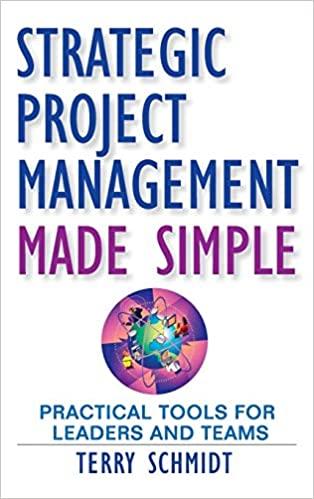Answered step by step
Verified Expert Solution
Question
1 Approved Answer
The following scenario was written by a reporter who became a Taco Bell worker for a few hours to experience what it's like to work
The following scenario was written by a reporter who became a Taco Bell worker for a few hours to experience what it's like to work in the drivethrough window at one of the most hightech, quickserve restaurant chains in the world. As you read, visualize how you could analyze a Taco Bell using the queuing models we discussed in this chapter. After the scenario, we will give you some hints related to how you can model the Quick Service QS restaurant and then we will ask you a series of questions related to your model.
It must always beHi how are you today?" Never, Hi how are you?" Hi how's it going?" or "Welcome to Taco Bell." Never, "What will it be today?" or even worse, "What do you want?" Every Taco Bell Service Champion memorizes the order script before his first shift. The folks who work the drivethru windows at the Taco Bell here in Tustin, California, about miles south of Los Angeles, and everywhere else, are called Service Champions. Those who work the food production line are called Food Champions.
You think you know itHi how are you today?" It seems easy enough. And you follow that with, "You can order when you're ready," never "Can I take your order?" The latter puts pressure on the driver, who might be a distracted teenager busy texting her friend or a soccer mom with a halfdozen kids in the van. "They don't need the additional pressure of a disembodied voice demanding to know their order," explains Mike Harkins. Harkins, is vicepresident of One System Operations for Taco Bell, which means he spends all day, every day, thinking about the kitchen and the drivethru.
He has been prepping me for my debut at the window. Getting ready, I wash my hands, scrubbing for the mandated seconds; slide on rubber gloves; and don the threechannel headset that connects me to the ordering station out in the lot, as well as to my fellow Champions. I take my place at the window. I hear the ding indicating a customer has pulled into the loop around the restaurant, and I immediately ask, Hi how's it going?"
It gets worse from there. As a Service Champion, my job is to say my lines, input the order into the proprietary point of sale POS system, prepare and make drinks like Blue Raspberry and Wild Strawberry Freezes, collect bills or credit cards, and make change. I input Bean Burrito Beefy Layer Burrito and Quesarito My biggest worry is that someone will order a Crunchwrap Supreme, a fastfood marvel made up of two kinds of tortillas, beef, cheese, lettuce, tomatoes, and sauces, all scooped, folded, and assembled into a handheld, multiplefoodgroup package, which then gets grilled for seconds. This actually doubles the time it takes to prepare a normal order. An order for a Crunchwrap Supreme, the most complex item on the menu, sometimes requires the Service Champion to take up position on the food production line to complete it in anything like the seconds that Taco Bell averages for each customer, from driving up to the ordering station to pulling away from the pickup window.
Above me on the wall, a flatscreen display shows the average time of the last five cars at either the order station or the pickup window, depending on which is slowest. If the number is red, as it is now, that means one, or both, of the waits is exceeding seconds, the target during peak periods. It now shows seconds, on its way to and then I stop looking. The highpitched ding that announces each new customer becomes steady, unrelenting, and dispiriting cars will roll through over the peak lunch rush. And I keep blowing the order script.
I fall behind so quickly and completely that restaurant manager Amanda Mihal, a veteran of years in the QSR business Quick Serve Restaurant, the acronym for an industry that makes acronyms for everything has to step in "You'll get it Amanda says as she fixes an order that I have managed to screw up "Eventually."
Every Taco Bell has two food production lines, one dedicated to the drivethru and the other to servicing the walkup counter. Working those lines is no easier than wearing the headset. The back of the restaurant has been engineered so that the Steamers, Stuffers, and Expeditors, the names given to the Food Champions who work the pans, take as few footsteps as possible during a shift. There are three prep areas: the hot holding area, the cold holding area, and the wrapping expediting area. The Stuffer in the hot holding area stuffs the meat into the tortillas, ladling beef with Taco Bell's proprietary tool, the BPT or beef portioning tool. The steps for scooping the beef have been broken down into another acronym, SST for stir, scoop, and tap. Flour tortillas must be cooked on one side for seconds and the other for five.

Step by Step Solution
There are 3 Steps involved in it
Step: 1

Get Instant Access to Expert-Tailored Solutions
See step-by-step solutions with expert insights and AI powered tools for academic success
Step: 2

Step: 3

Ace Your Homework with AI
Get the answers you need in no time with our AI-driven, step-by-step assistance
Get Started


